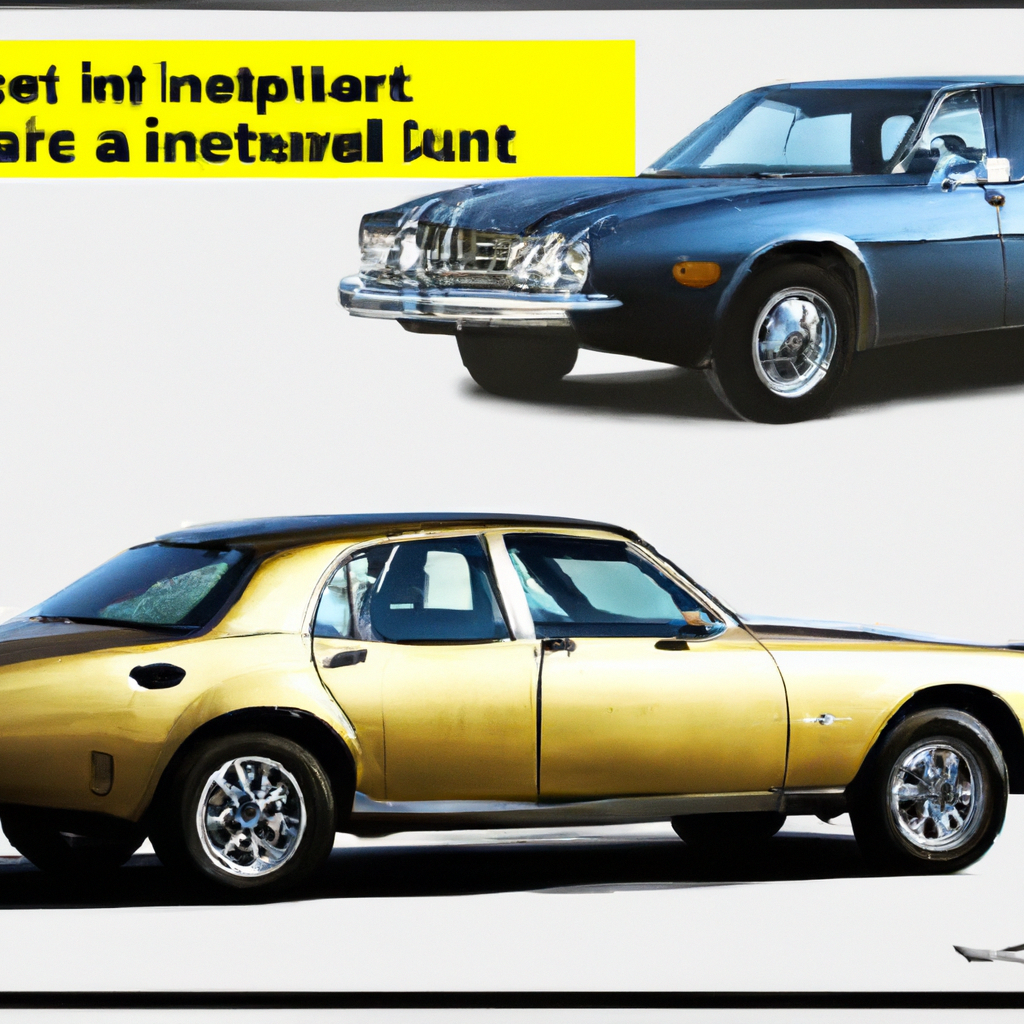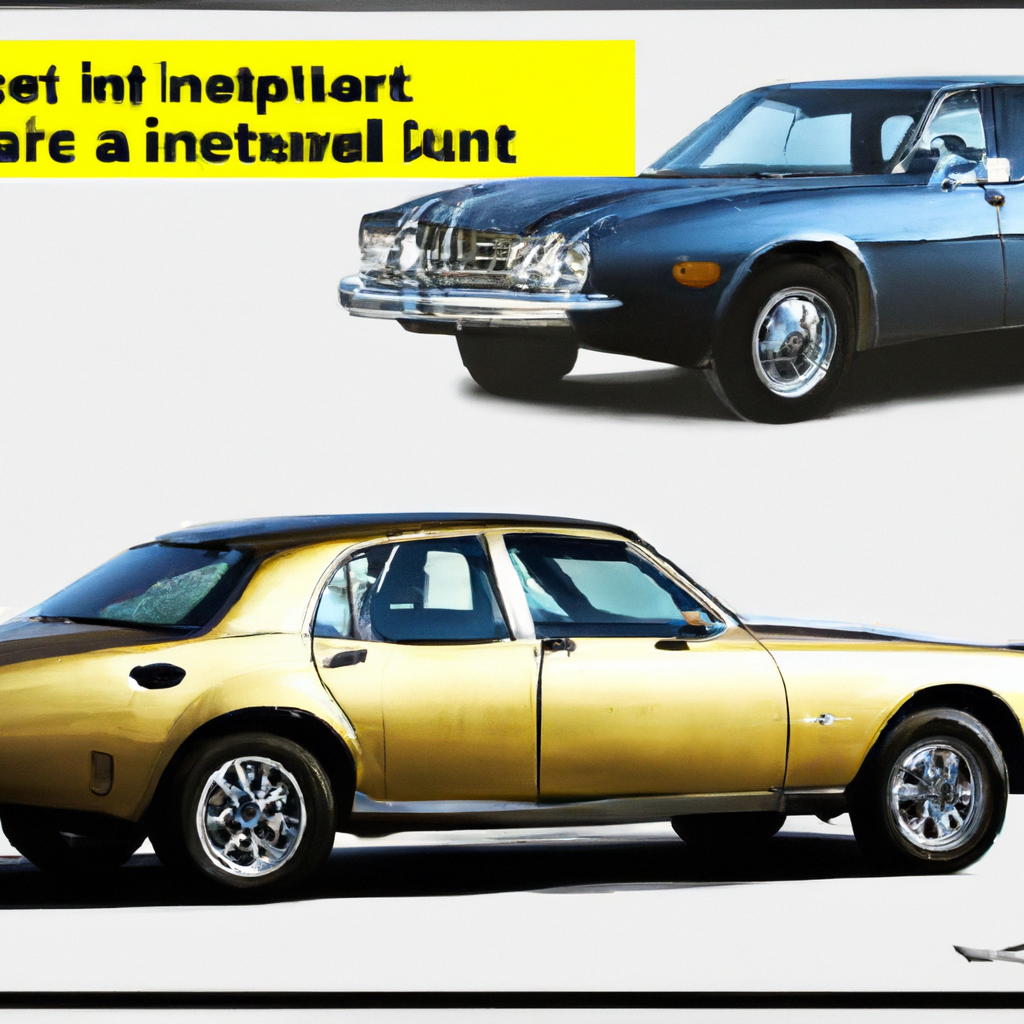Are you caught in a dilemma about whether to hold onto your old faithful vehicle or take the leap and invest in a new one? In “Comparing the Costs: Maintaining Old Vehicles vs Investing in a New One,” we’ll break down the financial implications of both options. With rising maintenance expenses and the allure of sleek, advanced features, it’s essential to consider the long-term costs associated with each choice. By the end, you’ll gain a clearer perspective on whether it’s more financially sound to keep patching up your trusty companion or embark on a new driving adventure. So, buckle up and let’s dive into the numbers!
Depreciation
New Vehicles
One major factor to consider when comparing the costs of maintaining an old vehicle versus investing in a new one is depreciation. Depreciation refers to the decrease in value that a vehicle experiences over time. In the case of new vehicles, depreciation is most significant in the first few years of ownership, with some studies suggesting that a new car can lose up to 20% of its value within the first year alone. This means that if you were to sell your new car after just one year of ownership, you would likely only receive 80% of what you initially paid for it.
Old Vehicles
On the other hand, old vehicles have already experienced the majority of their depreciation. The value of an old car has already settled, meaning that future resale prices are likely to be more consistent and predictable. While old vehicles may not hold their value as well as new ones, they are generally subject to slower rates of depreciation. This can be advantageous if you plan on keeping your car for a longer period of time, as the decrease in value will be more gradual.
Purchase Price
New Vehicles
When it comes to purchase price, new vehicles tend to have a higher price tag compared to their older counterparts. The cost of manufacturing new cars, along with the inclusion of the latest features and technologies, significantly contributes to their higher price. If you opt for a brand new car, you can expect to spend a considerable amount more than if you were to buy a used one.
Old Vehicles
Old vehicles, in contrast, are generally more affordable. Since they have already been used and have likely accumulated some mileage, their prices are typically lower than new cars. This can be particularly advantageous if you are on a tight budget or looking for a reliable mode of transportation without breaking the bank. Furthermore, used cars also offer a wide range of options in terms of make, model, and year, allowing you to find a vehicle that suits your needs and preferences at a more affordable price point.

Insurance
New Vehicles
Insurance premiums for new vehicles are often higher compared to those for older ones. This is due to several factors, including the higher value and cost of repairs associated with new cars. Insurance providers consider these factors when determining the rates for coverage. Additionally, new vehicles may also come equipped with advanced safety features which can help reduce the likelihood and severity of accidents, resulting in potential savings on insurance premiums.
Old Vehicles
With old vehicles, insurance premiums tend to be lower. Since the value of an old car is generally lower than that of a new car, insurance companies may offer more affordable coverage options. However, it is important to note that the exact premium will depend on various factors such as the age, make, and model of the vehicle, as well as your driving history. It is advisable to obtain quotes from different insurance providers to determine the most cost-effective option for your specific situation.
Fuel Efficiency
New Vehicles
Advancements in automotive technology have led to significant improvements in fuel efficiency among new vehicles. Manufacturers have implemented innovative engineering techniques, such as the use of lightweight materials and more efficient engines, to maximize fuel economy. As a result, new cars often consume less fuel per mile traveled, resulting in potential fuel savings over the lifespan of the vehicle.
Old Vehicles
Old vehicles, especially those manufactured several years ago, may not offer the same level of fuel efficiency as their newer counterparts. This is because older cars may not have benefited from the latest technological advancements in engine efficiency and aerodynamics. Consequently, they may consume more fuel per mile traveled, leading to increased fuel expenses in the long run. However, it is worth noting that there are exceptions, as certain older models may still possess admirable fuel efficiency due to the manufacturer’s focus on economy during their production.

Maintenance and Repairs
New Vehicles
When it comes to maintenance and repairs, new vehicles generally require less frequent visits to the mechanic. The parts and components of a new car are fresh and have not experienced significant wear and tear, reducing the likelihood of breakdowns or major repairs. Additionally, many new vehicles come with warranties that cover repairs and maintenance for a specific period, providing additional peace of mind and potential cost savings.
Old Vehicles
Old vehicles, on the other hand, may require more frequent maintenance and repairs. As cars age, their components and systems are more prone to wear and tear, increasing the likelihood of breakdowns and the need for repairs. Additionally, older vehicles may require parts that are no longer in production or harder to find, potentially increasing the cost and time required for repairs. It is important to consider the potential expenses associated with maintaining an older car when comparing the overall costs of ownership.
Frequency of Repairs
Older vehicles may require repairs more frequently than new ones. As various components age, they may become less reliable and more prone to failure. The frequency of repairs can vary depending on factors such as the make and model of the vehicle, the maintenance and care it has received over the years, and the conditions in which it has been driven. Regular inspections and proactive maintenance can help mitigate the risk of unexpected breakdowns and reduce the frequency of repairs.
Cost of Repairs
In terms of the cost of repairs, old vehicles can potentially be more expensive compared to new ones. As vehicles age and wear out, certain parts may need to be replaced or repaired, and these parts can be costly. Additionally, labor costs can also add up when it comes to repairing older cars, as more specialized knowledge and skills may be required. It is important to factor in the potential expenses for repairs when deciding whether to invest in a new car or continue maintaining an old one.
Warranty
New Vehicles
One of the advantages of purchasing a new vehicle is the warranty typically offered by the manufacturer. New cars often come with comprehensive warranty coverage, which can vary in terms of duration and coverage. These warranties can provide peace of mind, as they protect against unexpected expenses related to mechanical failures or defects during the specified period. Some warranties may even include perks such as free routine maintenance, further reducing ownership costs.
Old Vehicles
Old vehicles, especially those that are several years old, may no longer be covered by a warranty. Once the original warranty expires, the cost of repairs and maintenance becomes the responsibility of the owner. However, it is worth noting that some used cars may still have an existing warranty if it was transferred from the previous owner or if the manufacturer offers extended warranty options. It is advisable to inquire about the warranty status of a used vehicle before making a purchase to assess the potential costs of owning and maintaining it.
Safety Features
New Vehicles
Advancements in automotive technology have led to the inclusion of a wide range of safety features in new vehicles. From advanced driver-assistance systems, such as lane departure warning and automatic emergency braking, to enhanced structural designs and airbag systems, new cars often offer a higher level of safety compared to older models. These safety features can help prevent accidents and reduce the severity of injuries, potentially saving lives and minimizing medical expenses.
Old Vehicles
Old vehicles, especially those manufactured before advanced safety features became commonplace, may lack the same level of safety features found in new cars. While older cars may still have basic safety features such as seat belts and airbags, they may not offer the advanced technologies that newer models possess. Despite this, it is important to note that proper maintenance and adherence to safe driving practices can help mitigate the risks associated with owning and driving an older vehicle.
Environmental Impact
New Vehicles
When analyzing the environmental impact, new vehicles tend to have an advantage over older ones. Due to stricter regulations and advancements in technology, modern cars have become more environmentally friendly. New vehicles are subject to stringent emissions standards and are equipped with advanced catalytic converters and other components that help minimize harmful emissions. Additionally, the shift towards electric and hybrid vehicles further reinforces the positive environmental impact of purchasing a new car.
Old Vehicles
Old vehicles, especially those manufactured before the implementation of stricter emissions standards, may contribute to higher levels of pollution. As vehicles age, they may experience wear and tear, resulting in decreased fuel efficiency and increased emissions. Although regular maintenance and proper upkeep can help reduce the environmental impact of an old vehicle, it is important to consider the potential consequences and explore greener alternatives if minimizing your carbon footprint is a priority.
Technology and Features
New Vehicles
One area where new vehicles excel is in terms of technology and features. Automakers constantly strive to innovate and incorporate the latest advancements into their new models. From touchscreen infotainment systems, smartphone integration, and advanced navigation systems to advanced driver-assistance capabilities and in-car connectivity, new vehicles offer a plethora of cutting-edge features. These technologies not only enhance the overall driving experience but can also contribute to convenience and entertainment during your journeys.
Old Vehicles
Old vehicles, particularly those manufactured several years ago, may not possess the same level of technology and features as newer models. Depending on the age and make of the vehicle, you may find yourself missing out on the latest conveniences and technologies. However, some older cars may still offer classic features and designs that appeal to certain individuals. It is important to assess your personal preferences and priorities when comparing newer and older vehicles in terms of technology and features.
Resale Value
New Vehicles
New vehicles, as mentioned earlier, experience significant depreciation in the first few years of ownership. This depreciation can have a substantial impact on the vehicle’s resale value. If you decide to sell your new car after just a few years, you may find that its value has depreciated significantly. However, it is worth noting that certain brands and models hold their value better than others, so it is important to consider factors such as brand reputation and market demand when evaluating the potential resale value of a new car.
Old Vehicles
Old vehicles, particularly those that have already experienced the bulk of their depreciation, can have a more stable and predictable resale value. While older cars may not retain their value as well as new ones, their depreciation rate tends to be slower. This can be advantageous if you plan on selling your car in the future, as you will likely have a clearer understanding of the vehicle’s market value and potential resale price.
In conclusion, maintaining an old vehicle versus investing in a new one involves weighing various factors, including depreciation, purchase price, insurance costs, fuel efficiency, maintenance and repairs, warranty coverage, safety features, environmental impact, technology and features, and resale value. Each of these factors can significantly impact the overall cost and ownership experience of a vehicle. By considering your individual needs, priorities, and financial situation, you can make an informed decision that aligns with your budget and preferences. Ultimately, the choice between maintaining an old vehicle or investing in a new one is a personal one that depends on a range of factors unique to each individual’s circumstances.

